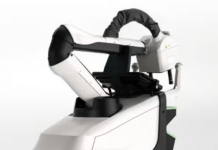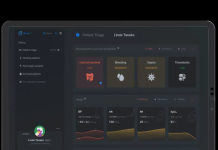GE Healthcare recently announced that it received FDA premarket approval for its End-tidal (Et) Control software for general anesthesia delivery.
The software is approved for use with GE Healthcare’s Aisys CS2 anesthesia delivery system. The Chicago-based company initially released the technology in Europe in 2010 and is currently used in over 100 countries.
Et Control software semi-automates the delivery of anesthesia using software to allow anesthesia providers to set targets for end-tidal oxygen and anesthetic agent, according to the company. The software quickly achieves and maintains set targets and improves anesthesia delivery accuracy while simplifying the workflow and reducing drug waste.
“In the past, we continually adjusted vaporizer setting and fresh gas flow to control inspired concentration in an attempt to achieve and maintain the end-tidal concentration we wanted for our patients. To have direct control of the end-tidal concentration that reflects the drug level in the patient’s blood is a big step forward for our ability to personalize a patient’s care. Additionally, low-flow anesthesia has benefits for hospitals and the environment,” said Jim Philip, an anesthesiologist and director of clinical bioengineering at Brigham and Women’s Hospital.
RELATED: Theraclion Receives FDA Approval for SONOVEIN Trial
GE Healthcare said the Et Control software may also offer a potential 44% decline in greenhouse gas emissions; increased accuracy in maintaining target concentrations of oxygen and anesthetic agents; 50% reduction in manual keystrokes and a potential 27% reduction in operating room costs.
“Anesthesia providers in the U.S. will have access to the most advanced anesthesia tools available to improve patient care,” said Eric Ruedinger, GM of GE Healthcare’s anesthesia and respiratory care business. “As the long-standing global leader in anesthesia delivery, GE Healthcare invested in the development and clinical validation of this Et Control algorithm, and we are committed to creating clinically relevant solutions that will enhance anesthesia practices into the future.”






